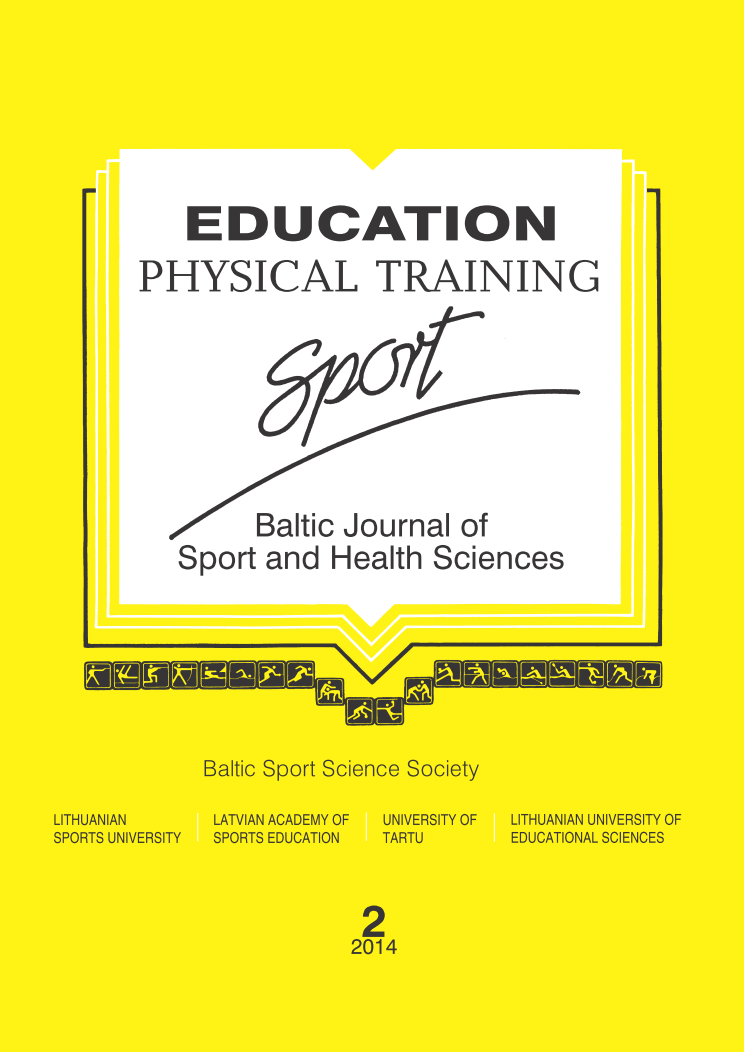The Concatenations of Electrocardiographic Parameters at the Anaerobic Threshold
Abstract
Background. An anaerobic threshold has been an important index of performance for assessing cardiopulmonary
and muscle integration during aerobic exercise. The analysis of electrocardiographic parameters concatenations can
be used to describe the physiological changes in the whole body during physical load. Research aim was to evaluate
the concatenations of electrocardiographic parameters in different physical ability men group at the aerobic threshold
during bicycle ergometry.
Methods. The research contingent consisted of 90 healthy men who according to the power achieved at the
anaerobic threshold were divided into 3 groups, and 17 men who had increased blood pressure and were assigned to a
group of health problems. The following tests were used: anthropometric measurements, electrocardiography, bicycle
ergometry, spiroergometry and mathematical statistics. During bicycle ergometry the pulmonary gas exchange rates
were collected, which was used to establish the anaerobic threshold.
Results. This research has shown changes in the functional parameters of the cardiovascular system and inter-
parametric concatenations of different fractal levels at the anaerobic threshold. This study established that the best
results were obtained in the high aerobic power group.
Conclusions. This research established that the functional parameters of the cardiovascular system depended on
the physical ability of subjects. At the anaerobic threshold in the high aerobic power group, the body metabolism and
regulatory systems (JT/QRS) and heart and body (RR/QRS) interaction was weaker, and the heart metabolism and
regulatory systems (RR/JT) interaction was stronger than in other research groups (p < .05).
Keywords: physical load, anaerobic threshold, concatenations of the electrocardiographic parameters.
Downloads
Published
Issue
Section
License
Copyright (c) 2018 Baltic Journal of Sport and Health Sciences

This work is licensed under a Creative Commons Attribution 4.0 International License.






